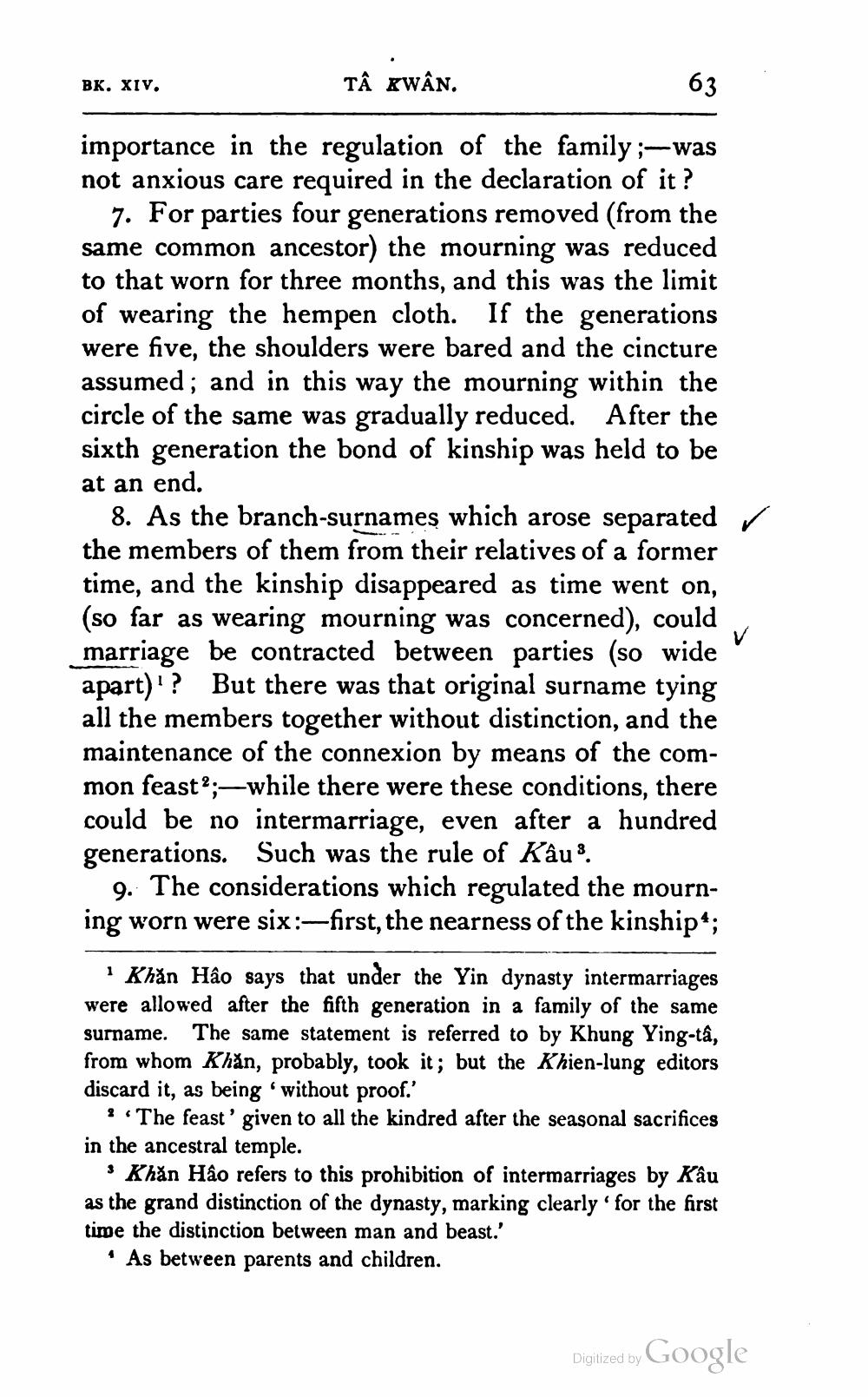________________
BK. XIV.
TÂ KWÂN.
✓
importance in the regulation of the family ;-was not anxious care required in the declaration of it?
7. For parties four generations removed (from the same common ancestor) the mourning was reduced to that worn for three months, and this was the limit of wearing the hempen cloth. If the generations were five, the shoulders were bared and the cincture assumed; and in this way the mourning within the circle of the same was gradually reduced. After the sixth generation the bond of kinship was held to be at an end.
8. As the branch-surnames which arose separated the members of them from their relatives of a former time, and the kinship disappeared as time went on, (so far as wearing mourning was concerned), could marriage be contracted between parties (so wide apart)'? But there was that original surname tying all the members together without distinction, and the maintenance of the connexion by means of the common feast?;—while there were these conditions, there could be no intermarriage, even after a hundred generations. Such was the rule of Kâu
9. The considerations which regulated the mourning worn were six:- first, the nearness of the kinship";
Khăn Hảo says that under the Yin dynasty intermarriages were allowed after the fifth generation in a family of the same surname. The same statement is referred to by Khung Ying-tâ, from whom Khăn, probably, took it; but the Khien-lung editors discard it, as being without proof.'
The feast' given to all the kindred after the seasonal sacrifices in the ancestral temple.
. Khăn Hảo refers to this prohibition of intermarriages by Kâu as the grand distinction of the dynasty, marking clearly for the first time the distinction between man and beast.'
• As between parents and children.
Digitized by Google




